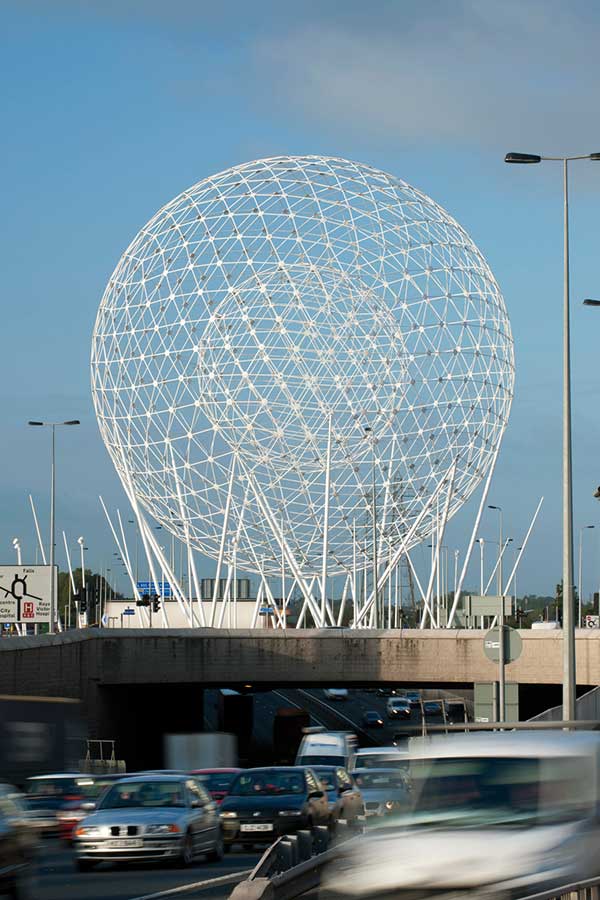SSDA Awards
SSDA Commendation: RISE, Belfast
 The largest piece of public art in Northern Ireland, the RISE sculpture threw up a number of challenges, not least an erection programme in the middle of a busy roundabout.
The largest piece of public art in Northern Ireland, the RISE sculpture threw up a number of challenges, not least an erection programme in the middle of a busy roundabout.
Architect: Wolfgang Buttress
Structural engineer: Price & Myers
Steelwork contractor: M Hasson & Sons Ltd
Main contractor: Wolfgang Buttress
Client: Belfast City Council
The RISE sculpture is viewed by thousands of pedestrians and motorists, some on their way to nearby George Best Belfast City Airport, everyday.
The unique design of this large steel sculpture consists of a pair of concentric spheres supported on tangential and traditional columns.
A lightweight structure was critical as the sculpture sits in the middle of a roundabout which has subways beneath it.
“Steel was the only option for this project,” explains Sculptor Wolfgang Buttress. “The material gave us the required lightness, while designing with tubular steelwork produced soft simple angles.”
An efficient design was a key requirement in order to guarantee an accurate erection programme. This resulted in over 4,000 steel components, connected with approximately 10,000 bolts, being distilled down to less than 60 individual types.
This standardisation allowed steelwork contractor M Hasson & Sons to focus on delivering the level of accuracy required to ensure that every member would adopt its correct position on the surface of each of the two spheres.
 “We worked with the artist for six months to get the correct design for his sculpture,” says Emmanuel Verkinderen, Price & Myers Project Engineer. “What we have is a unique design whereby the spheres are being supported by columns that are holding them in a way that resembles a ‘cupped-hand’.”
“We worked with the artist for six months to get the correct design for his sculpture,” says Emmanuel Verkinderen, Price & Myers Project Engineer. “What we have is a unique design whereby the spheres are being supported by columns that are holding them in a way that resembles a ‘cupped-hand’.”
A host of prototype assemblies were prepared which allowed the erection team to start planning for a most complex programme. The trial assemblies provided invaluable insight into the actual behaviour of the geodesic frameworks during lifting and up-ending operations.
“The fabrication process was made easier and more cost effective by the fact that we designed an extremely simple node connection,” adds Mr Verkinderen.
The erection process was always going to be an extremely challenging exercise, due to the location in the middle of a busy roundabout and the required prolonged lifting operations.
While the geodesic form of each sphere was very stiff and stable when complete, a lot of care was needed to ensure that stability was maintained during the erection process.
A series of bespoke temporary works, lifting appliances and associated accessories were designed to minimise risks and to ensure intermediate and final stability, as well as steelwork accuracy.
Maximising the number of connections at ground level, catering for the highly non-linear nature of the partially completed structure, was an essential part of the design and the execution of the temporary works.
The final operation of transferring the weight of the inner sphere off the temporary works through 72 steel suspension cables and then onto the outer sphere brought the complex erection programme to a conclusion.
“It’s a simple and elegant concept, harmonising art and engineering,” says Mr Buttress.
In summary, the judges say this large sculpture is impressive for its geometric form and precision.













